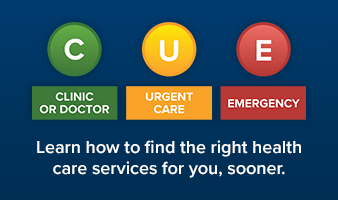New IT platform to support better care coordination, patient flow at Winnipeg hospitals
Winnipeg Regional Health Authority
Published Thursday, February 23, 2023
The Winnipeg Health Region is investing in a new information technology platform that will provide system leaders at city hospitals, health centres, community, and long-term care with real-time data that can be used to improve care coordination and patient flow.
The SHREWD platform, one of a number of ongoing initiatives launched by the health system, will enable leaders from Shared Health and the Winnipeg Regional Health Authority (WRHA) to leverage data from a wide variety of information systems to provide visibility of various health system pressures. The platform includes a built-in notification system which will then be used by managers and leaders to support operational decisions in real time to address patient flow, staffing challenges and emergency and urgent care wait times.
The upgraded technology, which represents an investment of about $125,000, is expected to be in place at Winnipeg hospitals this spring, as well as Riverview Health Centre, Misericordia Health Centre and Deer Lodge.
"We continue to bring forward and invest in new initiatives that we believe will address long-standing patient flow challenges," said Mike Nader, CEO of the Winnipeg Regional Health Authority. "Upgrading the technology we use to identify system pressures as they are occurring will allow managers and system leaders to make decisions more quickly, which will optimize patient flow and address staffing and patient needs more effectively."
Other recent initiatives launched in recent months to curb patient flow issues include scheduling additional physician shifts at city hospitals and offering paid training for entry level applicants to become uncertified home care attendants, the latter of which will strengthen community supports and speed up the discharge process for inpatients. A link to the positions can be viewed here.
These initiatives have been supplemented in recent months with the launch of the Health Human Resources Action Plan, which aims to address staffing challenges by focusing on staff retention, recruitment and training.
"Clinical leadership continues to meet with staff and physician working groups to discuss both their concerns and suggestions. These discussions have led to the implementation of a number of initiatives that have improved patient flow," said Jennifer Cumpsty, HSC Winnipeg's executive director of acute health services. "We thank our physicians and staff for these frank conversations and for their continued efforts to provide care to patients in as timely a manner as possible."
Median and 90th percentile wait times in emergency and urgent care increased slightly in January following improvements seen the previous month. Overall median times increased by 7.2 minutes in January, to 2.72 hours, while 90th percentile waits increased by 18 minutes to 7.52 hours.
Some other emergency and urgent care metrics for the month are below:
- Patient volumes held steady in January at an average of 730.4 per day, down slightly from 733.9 in December;
- The median length of stay for patients in emergency or urgent care who were awaiting admission to an inpatient unit was 22.47 hours, up from 19.82 hours in December;
- The overall left without being seen (LWBS) rate in January was 13 per cent, up from 11.5 per cent the previous month. The LWBS rate at HSC Winnipeg's adult ED was 25 per cent in January, up from 21.8 per cent in December.
Patients are reminded to continue seeking help in an emergency, either by calling 911 or going to an ED or urgent care centre. All patients are assessed and triaged upon arrival and care will be provided, with the sickest and most injured patients prioritized. Those with lower-acuity concerns can expect longer waits. Real-time waits for emergency departments, urgent care centres, walk-in connected care clinics and walk-in clinics can be seen at MyRightCare.ca. The site also provides information on where patients can appropriately seek care for common concerns.
Advice for parents on how to treat their sick or injured child, as well as when and where to take them for care, can be viewed at KidCareMB.ca.
Monthly ED wait time data, as well as an FAQ, is available here.

